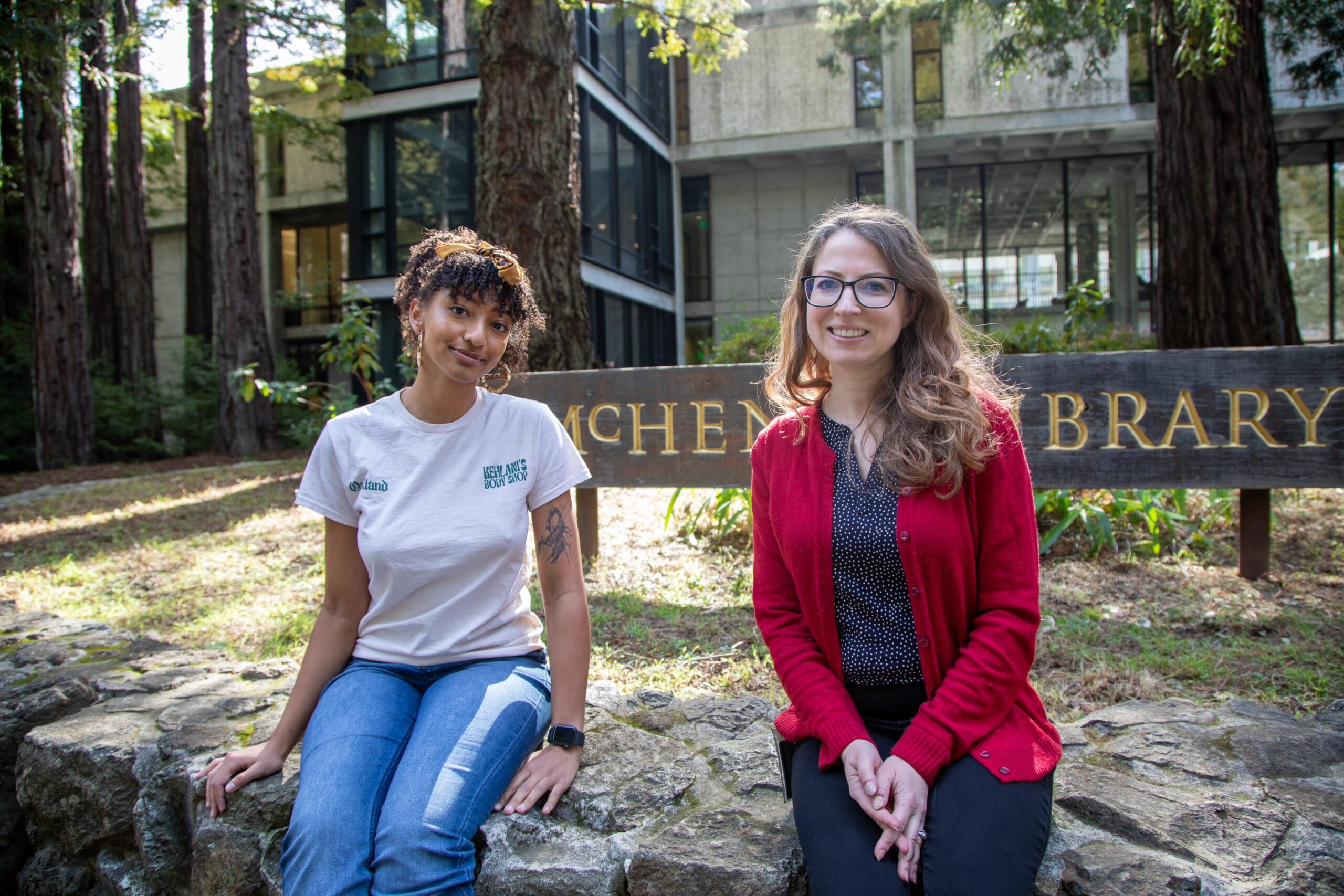Campus News
Designing the digital user experience to meet research needs – Meet Jessica Waggoner
Jessica Waggoner, the user experience librarian, and her students work to understand information-seeking behaviors so the campus community can easily access the resources they need to be successful in their classes and push the boundaries of research.

Jessica Waggoner knows the UC Santa Cruz libraries inside and out. She first started using them when she was an undergraduate majoring in legal studies with a philosophy minor (Kresge 2003). Today, as UC Santa Cruz’s user experience librarian she’s on the other side, ensuring students and faculty can easily access resources they need to be successful in their classes, push the boundaries of research and create new knowledge.
Academic librarians play an essential role in helping community members find and access information. As resources have expanded from tactile pieces—mainly books, magazines, journals and microfiche—to digital resources, new fields have emerged in library science. “There’s always going to be key physical pieces and research that are important to house,” Waggoner explained. “But a lot of things are published only online now. So as more of the information has moved online, the role of the library has changed as well to connecting folks to that digital information and also retrieving it for them.”
With that change comes the need for new job skills. “It’s an important component of librarianship now to understand digital information in terms of databases and how databases are designed,” Waggoner said. “We also need to understand information-seeking behavior. This is a key part of my job. It’s not just what collections we are providing access to, but are we doing that in a way that makes sense to the people that need to use our tools and interfaces to find that information? So, to that end, a lot of my work actually involves user research.”
For 15 years, Waggoner has worked at the UC Santa Cruz Library, but she almost went down another path. She majored in legal studies because she wanted to be a lawyer. That changed when Waggoner went into the professional world and worked as a paralegal. Looking back on a field study she did at the Santa Cruz County Law Library as an undergraduate, Waggoner realized what she really liked. “That was my first time working in a library,” said Waggoner. “I experienced this great mix of helping professional attorneys who would come in and need to do legal research, and also people representing themselves or filing their own claim who didn’t have experience with the law. What I really loved was helping people with their research. I just love doing research.”
Waggoner started working at the University Library as the government collections coordinator and then moved to emerging library technologies. She designed and developed multimedia, textual, and programmatic content for digital library systems. When she was getting her master’s in library & information science at the University of British Columbia, Waggoner got her first exposure to coding, HTML, and CSS. A few years later, she enrolled in the Master of Education, Instructional Technologies program at San Francisco State University. That’s where she went deeper into coding. “I took courses in more advanced CSS and also got introduced to JavaScript as part of instructional technologies and designing instructional systems.”
In 2013, Waggoner was hired in the Digital Initiatives department as the project manager and web services librarian, one of five librarians in the department. “I found myself working with the staff creating web content to think about what the needs were of the users—the students, the staff, the faculty—coming to a webpage to do research or to learn about a library service… to make sure their pages and content really met those users’ needs.”
In 2021, she moved to the Learning, Research and Engagement department. Waggoner has three undergraduates working with her, two user experience assistants and a web designer assistant. Sher says library users benefit substantially from their work because students today experience the world differently than almost every other generation before them. “When they use tools like TikTok or Amazon, those are shaping their behaviors, how they engage with the digital world, their expectations and the language that’s meaningful to them when they’re using a user interface. User interface can no longer be a static thing.”
Together, the team connects directly with students and faculty. Through interviews, they ask questions and observe how interviewees conduct searches and the words they use when discussing their online experience. “That helps us then come back and look at our own tools and services and design them in a way that meets the user needs. We are prioritizing our work based on what their needs are rather than what sounds exciting to me at the moment.”
Most of Waggoner’s student workers are planning to go into user experience and interface work professionally. Many are cognitive science majors interested in human-computer interaction. “Their coursework really prepares them for that and then through working with me, they have additional experiences applying what they’ve learned in a professional environment.”
The assistants learn specific job-related skills and techniques, such as conducting usability studies and literature reviews, thematic analysis, user interface design, and recommendation implementation. They also gain valuable collaborative skills, including explaining their design, giving meaningful critiques and feedback, and asking questions to get the information needed to implement someone else’s vision.
Over her more than two decades at the University Library, the thing Waggoner is most proud of isn’t a specific webpage or user interface she designed and implemented. “Seeing my students both engage in the research and then come up with a design that really speaks to the user needs and is much more usable than our current web content is what I’m most proud of in this work.”